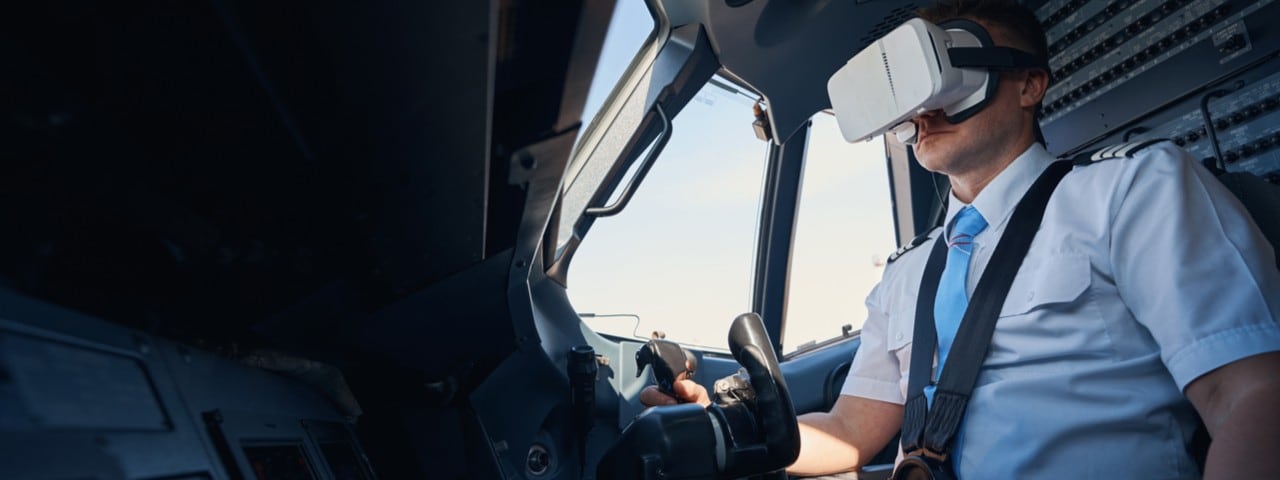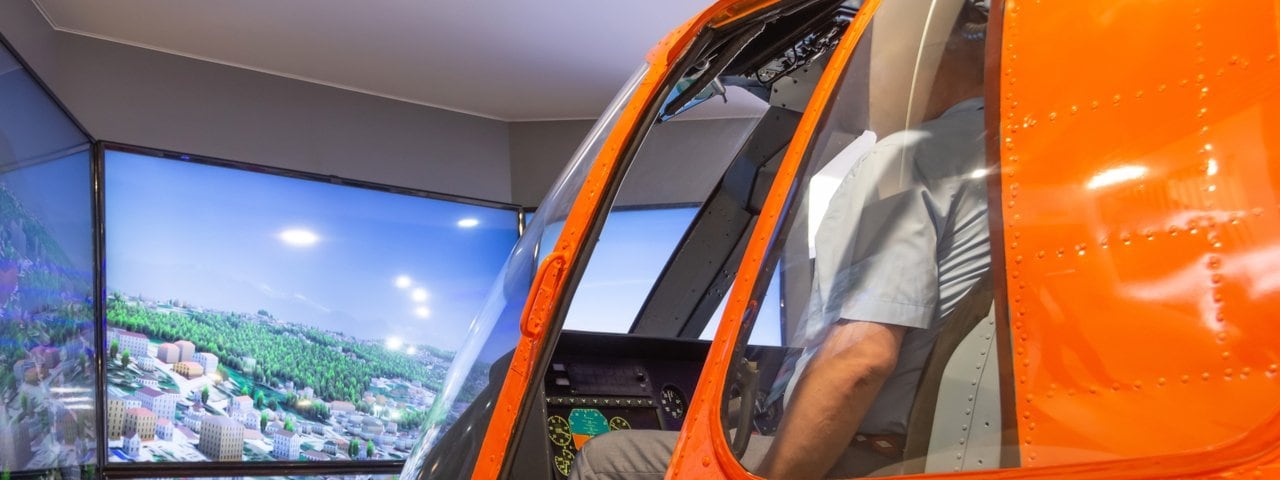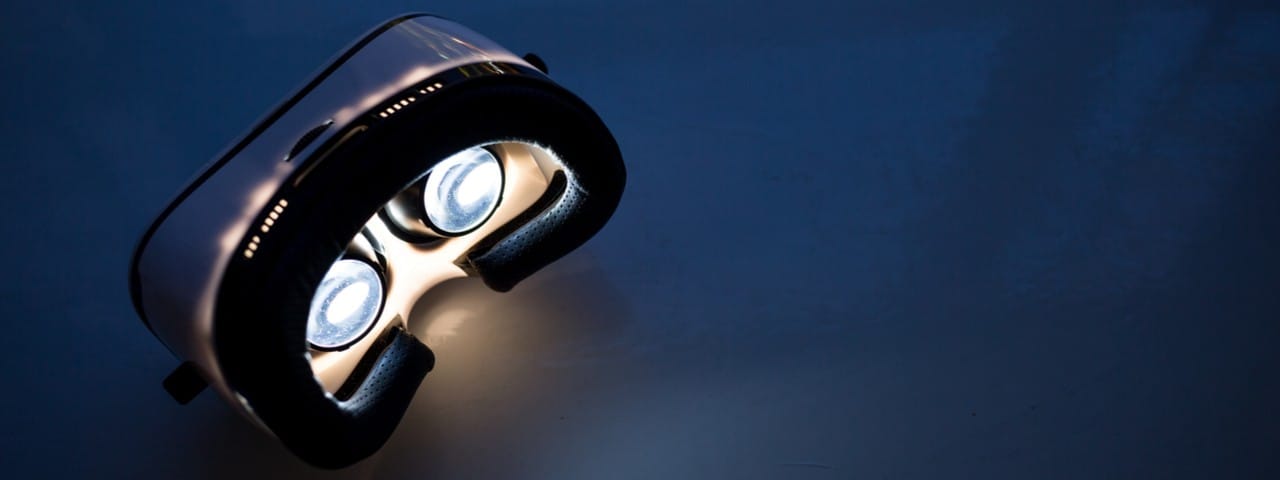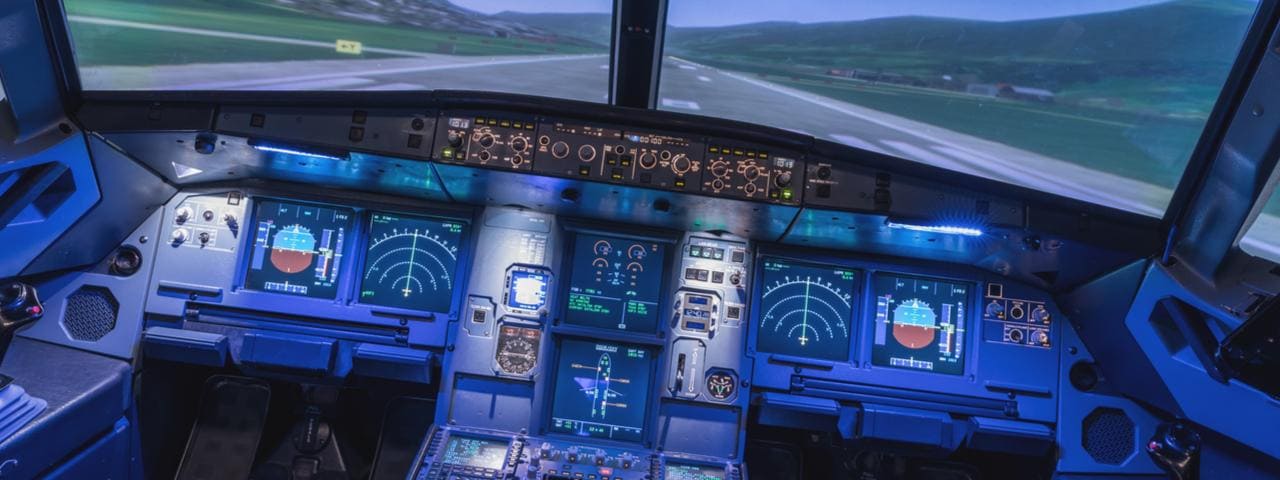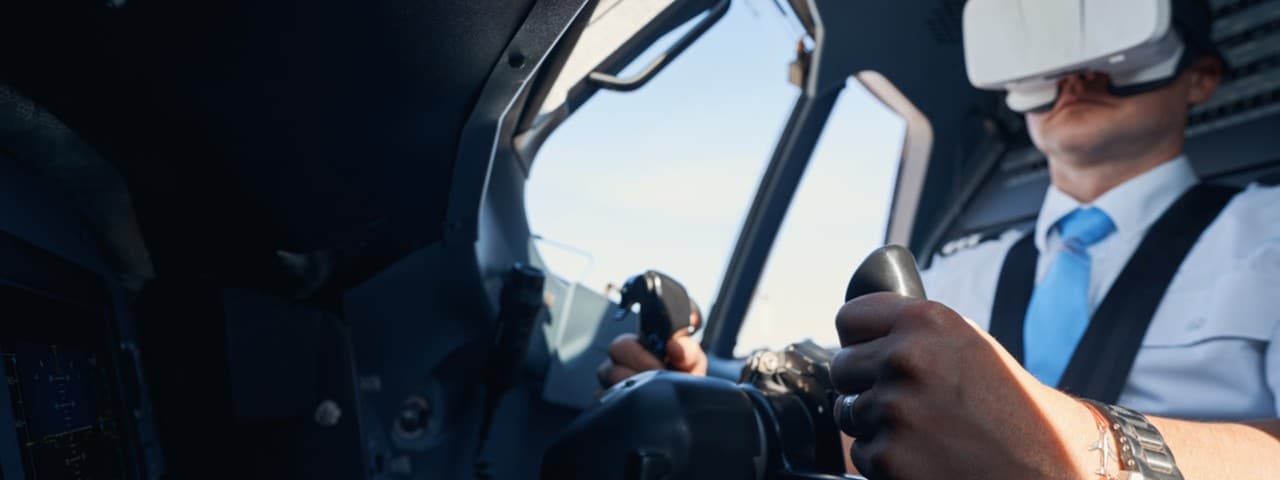Are VR Flight Simulators the Future of Pilot Training?
Technology breakthroughs in the future will see virtual reality (VR) applications and devices becoming more powerful and getting better at creating higher-quality visuals. These devices already have a history of use in pilot training, but now VR flying is taking off to the next level.
Flight simulators have been used to train pilots for more than 90 years. In that time, there have been many breakthroughs in aviation technology. Now VR is about to usher in a whole new era of professional pilot training, with far-reaching consequences for the aviation industry.
All pilots, from Air Force to commercial and private jet pilots, have been trained in some kind of flight simulator for close to a century. But virtual reality is about to change the way students are taught at pilot training schools in what is set to be more than just a breakthrough for technology.
In April 2019, the US Air Force launched a ‘Pilot Training Next’ class with 30 students. Using VR headsets and advanced artificial intelligence (AI) biometrics instead of traditional multimillion-dollar flight simulators, 13 pilots were certified in just four months. The usual pilot-training system takes about a year. This VR flight training came in at a cost of US$1,000 per unit, instead of the usual $4.5 million for a legacy simulator. A VR pilot-training system has the potential to significantly lower flight-training costs, both in regards to equipment costs and training time, while lowering the budget required by the Air Force to successfully do so.
Students were able to fully immerse themselves in a cockpit using an HTC VIVE virtual reality headset; meanwhile, biometrics monitored their heart rate and measured their pupils, giving flight instructors an accurate reading of just how immersed students were in the learning experience – something not possible with traditional flight simulators. Another groundbreaking part of VR flying was the ability to change up one cockpit for another – taking just 10 seconds for a student to go from flying a T-6 trainer to an F-22. The learning experience was further enhanced by allowing students to analyze a flight that had been captured and uploaded into the VR simulator.
What is virtual reality pilot training?
Typically, a flight simulator is created by chopping off the front (cockpit) of an airplane, which is then mounted on a hexapod platform that gives the plane section a six-degree freedom of movement. Video displays are then installed, allowing pilots to look out seemingly over a landscape or runway.
During pilot training, flight simulators allow students to interact with a real airplane cockpit. They save fuel as well as wear-and-tear on aircraft and engines, and can replicate hazardous conditions and system failures without putting any real-life passengers at risk.
A full flight simulator (FFS) is a technologically superior model that uses advanced technology in areas of motion, visuals, communication and air traffic. For instance, an FFS can simulate the friction of the air along the fuselage and expose pilots to spatial-orientation exercises. This gives more than a 180-degree view in satellite-signal quality of all important objects at a particular airport. Pilots can then precisely work out their approach procedures for the airport in the simulator.
In the past, there were four levels of FFS, graded A to D, with D being the highest standard. In recent years, these levels have been changed to seven international levels, and Level D is now Type 7. The Level D/Type 7 standard is used for both initial pilot training (conversion to a new type of aircraft), and recurrent commercial pilot training for commercial air transport (all commercial pilots must train regularly, usually every six months, to retain their qualification to fly passengers in CAT, or commercial air transport, aircraft).
Flight simulators are huge, weigh tonnes and cost a lot. For example, a Type 7 FFS sells for upwards of $12 million, and that excludes the cost of actually operating the simulator. It gets even more expensive with the launch of a newer model of airplane, which means the old one must be dumped. The result is that the pilot training cost is extremely high and beyond the reach of many aspiring pilots.
Is VR pilot training still a speck on the horizon?
The aviation industry is divided about the effectiveness of using a VR pilot training system in pilot training schools. Some argue that nothing on the market can replace the tried-and-tested flight simulator, believing that it’s vital for pilots to train in a real cockpit where they can even reach for their oxygen mask if the cockpit begins to fill with smoke, and feel the subtle vibrations of the plane through a real cockpit seat. Right now, there is some evidence that virtual reality is a better alternative to physical simulators, even though they are not a perfect solution.
The 2021 study, “Pros and Cons of a VR-based Flight Training Simulator; Empirical Evaluations by Student and Instructor Pilots” conducted two experiments to test students’ and pilots’ views on VR versus a traditional flight simulator. It found that there was only one downside that could be improved upon when comparing VR to traditional mechanical flight simulators. This downside was how pilots interacted with cockpit systems using VR, but this improved organically with practice. Apart from this, all the subjects involved found that VR offered a better learning experience, and that the 360-degree visibility was a major benefit. These benefits are part of the reasons why VR is already being used as an alternative to video tutorials by the Air Force and in private pilot training schools, where pilots train for commercial airlines or for work in the private plane charter industry.
The US Army recently announced a deal with Microsoft to use the company’s HoloLens technology in military training. This allows soldiers to get real-time readings on their environment, but research objectives aim to develop technology that enables pathfinding, target acquisition and mission planning. Based on the huge savings on flight-training costs and the reduced risk associated with VR flying, it’s likely that virtual reality will be rapidly adopted at military pilot school, as well as in commercial and private pilot training.
The future of VR pilot training
In the past decade, virtual reality has gone from the stuff of fantasy to a mainstay of the video-gaming industry. More than 230 companies were developing VR-related products by 2016, including big-name brands such as Google, Apple, Amazon, Microsoft, Sony and Samsung. By 2018, Facebook had showcased Half Dome, a prototype with a varifocal display. This allowed for an infinite number of focusing distances for near, intermediate and far vision, with a 140-degree field of view; all this was achieved without forfeiting the current form or weight of VR consumer devices.
Current technology uses a VR headset or multi-projected environment that simulates a user’s physical presence in a virtual environment. But the device that’s advancing VR pilot training most significantly is known as a haptic system (also called ‘force feedback’ in video gaming and military-training applications), which has the ability to transmit vibrations and other sensations to the user.
Advancements in the virtual world have seen the US Air Force using the technology as part of its pilot-training system, and it’s had particularly positive results for sufferers of post-traumatic stress disorder (PTSD). The technology is also being used as an alternative to video tutorials at private pilot schools. Recently, the chief pilot instructor of an Australian aviation company worked with a production studio to create a VR flying experience that teaches students the basics of flying using a smartphone and mobile VR headset. A VR pilot certification course is already being offered, with others due to be added if the first course is successful.
It’s also possible that VR alone won’t completely replace FFS systems, but rather be integrated into them. The article, “Flight Simulator Sales Ramp Up With AR and VR Integration” from Aviation Pros describes how flight simulators are the main way that pilots are trained, and suggests that they are likely to remain so into the near future. However, these FFS systems are increasingly using AR (augmented reality) and VR to improve the experience they offer, which means VR may find a place alongside these traditional training systems.
A quick guide to the best VR headsets and platforms on the market
In the past decade, virtual reality has gone from the stuff of fantasy to a mainstay of the video-gaming industry. More than 230 companies were developing VR-related products by 2016, including big-name brands such as Google, Apple, Amazon, Microsoft, Sony and Samsung. By 2018, Facebook had showcased Half Dome, a prototype with a varifocal display. This allowed for an infinite number of focusing distances for near, intermediate and far vision, with a 140-degree field of view; all this was achieved without forfeiting the current form or weight of VR consumer devices.
Current technology uses a VR headset or multi-projected environment that simulates a user’s physical presence in a virtual environment. But the device that’s advancing VR pilot training most significantly is known as a haptic system (also called ‘force feedback’ in video gaming and military-training applications), which has the ability to transmit vibrations and other sensations to the user.
Advancements in the virtual world have seen the US Air Force using the technology as part of its pilot-training system, and it’s had particularly positive results for sufferers of post-traumatic stress disorder (PTSD). The technology is also being used as an alternative to video tutorials at private pilot schools. Recently, the chief pilot instructor of an Australian aviation company worked with a production studio to create a VR flying experience that teaches students the basics of flying using a smartphone and mobile VR headset. A VR pilot certification course is already being offered, with others due to be added if the first course is successful.
It’s also possible that VR alone won’t completely replace FFS systems, but rather be integrated into them. The article, “Flight Simulator Sales Ramp Up With AR and VR Integration” from Aviation Pros describes how flight simulators are the main way that pilots are trained, and suggests that they are likely to remain so into the near future. However, these FFS systems are increasingly using AR (augmented reality) and VR to improve the experience they offer, which means VR may find a place alongside these traditional training systems.
A quick guide to the best VR headsets and platforms on the market
At present, the VR headset is either mobile or tethered. Some mobile headsets allow a user to attach a cellphone, turning their smartphone into a VR device, while others are completely stand-alone mobile units. This means no wires are required. However, VR setups that you can attach to your smartphone have declined massively in popularity because stand-alone mobile solutions – such as the Oculus Quest 2 – have become more powerful and affordable.
Tethered headsets offer six degrees of freedom (6DOF) to more accurately track a user’s position for a more immersive virtual-reality experience. Due to the limited processing power of smartphones or stand-alone mobile VR headsets, tethered VR headsets typically provide a much more immersive and realistic experience, since they are connected to powerful computers.
There are several pieces of equipment a user needs to get started:
-
VR flight software
-
A yoke or joystick to control your airplane
-
Rudder pedals, which are important for users who want to really fly someday.
Although not yet available to the common user, some of the latest work being done with haptic (force feedback) technology involves mechanical actuators – devices placed in contact with different areas of the body, most often the hands and fingertips, which allow the user to experience sensations in virtual reality. This has an exciting benefit when adapted for pilot training: they give VR trained pilots realistic, touch-based confirmation of every switch and dial they use while in flight.
Stand-alone headsets that use advanced, dedicated computer technology have arrived and proven they can stand alongside some of the more powerful, PC-tethered units, while even higher-spec VR sets are likely to arrive in the near future, but there are many exciting VR headset developments due for launch later in 2021.
Regardless of whether you use a headset that’s mobile or connected to a PC, these next-generation headsets will include even more advanced features, such as eyeball tracking and increased field-of-view aspects, allowing developers to create more realistic and accurate simulations which will enhance private pilot training online, and the virtual simulation experience.
Immersive flight software
The popularity of this software is due mainly to its realism. The latest X-Plane upgrade features a high-definition user interface, and the quality and realistic detail from “the gear trucks to the rivets” are a close simulation of those on the real aircraft. Some aircraft feature a simulated Garmin 1000 avionics suite, while every plane comes with a 3D cockpit, which can be used for instrument flight.
Considered one of the best flight simulators available on PC and effective for private pilot training online, this software delivers on realism. Far more than a video game, the real challenge is learning how to fly the virtual aircraft from a highly detailed cockpit and instrument panel. DCS World now has a number of YouTube learning tools and tutorials for users who need a bit of extra help getting to grips with the software.
Aerofly FS 2 features crisp, detailed cockpits, wonderful aerobatic physics and now the whole of southwestern USA laid out for the user. Aerofly offers advanced 3D graphics, and the flight dynamics model gives aspiring pilots a high level of realism.
The newest flight simulator on our list and the award-winning sequel to Microsoft Flight Simulator X – aptly titled Microsoft Flight Simulator – was released in August 2020. This new edition offers armchair flight-sim enthusiasts a completely unrivalled experience. The game lets players fly across the entire globe in unbelievable detail, thanks to a new cloud-based environmental system powered by Microsoft’s Azure service. This digital environment also taps into systems to provide live traffic, real-time weather updates, and even animals during your flight.
The latest in-flight simulation offers players the chance to fly 20 commercial and private aircraft out of the box, with numerous modifications bringing additional aircraft, scenery, and other great user content to the game. This flight simulator offers VR support for numerous devices including the Valve Index, HTC VIVE, Oculus Rift, and Windows Mixed Reality, and will be available on Xbox in 2021.
How pilots and the aviation industry can make VR work for them
One thing’s for sure: the use of VR in aviation can no longer be ignored, whether a pilot or flight instructor feels more at home in an old-school sawn-off cockpit or strapped to the latest Type 7 full flight simulator. The number of VR headsets in use at every major aviation and aerospace trade show are proof of this, along with the military case study for the affordability, effectiveness and ease-of-use of VR pilot-training systems.
VR flight simulations might not be able to take the place of actual experience in the air, but they can open up the possibilities of a career in aviation for a whole new generation by significantly reducing pilot-training costs, and enhance the experience offered by traditional FFS.
In 2019, Lufthansa Aviation Training launched its first Virtual Reality Training for cabin crew in Frankfurt and Munich, Germany. In future, flight attendants’ recurrent training will take place in modern VR hubs. Around 18,500 flight attendants each year will practise safety-related training in state-of-the-art virtual training courses, and there are plans to expand the VR training to other areas of cabin crew training.
Despite the exciting possibilities of VR pilot training, the technology has some way to go – and many people to convince – before it becomes part of mainstream pilot training. Many aviation experts are still of the opinion that VR flying, no matter how realistic, can never be the same as being in a Type 7 full flight simulator or even a basic cargo-plane simulator. There is the issue of convincing the brain that it is in a real-life flight situation when the student knows they can just hit the reset button and do it over again. The future of VR flight training will depend on technology’s ability to achieve what is being called ‘fused reality’ – being able to convince the brain that it is in a real-life or critical situation, even when it knows it’s in a world of virtual reality.
This is something NASA’s Armstrong Flight Research Center is working on, along with engineering solutions company Systems Technology. The project is itself called Fused Reality, and involves a head-mounted VR tool that allows pilots to train for various situations in the air. The latest findings are that the VR flying experience is better able to convince the brain that a flight situation is real when the body is in flight as opposed to being in a simulator seat. Since the manoeuvres are carried out at 5,000ft, recovery errors are not expected to be catastrophic.
Although VR technology still has a long way to go, it is developing in leaps and bounds. For now, the pilots of tomorrow can put on a VR headset and get to grips with a Cessna 172, fly the Airbus A320 and master a Boeing 747. After all, every pilot will tell you they dreamed of flying long before they actually did.
Take to the skies with a private plane charter
If you’re more excited to fly by private jet charter than get behind the controls yourself, we’ve got you covered. We offer a wide variety of aircraft for private plane rental, whatever your needs are, including group charters. To start the process to charter a flight, please call our team on +1 416 628 9412 or get in touch online for a personalized quote.
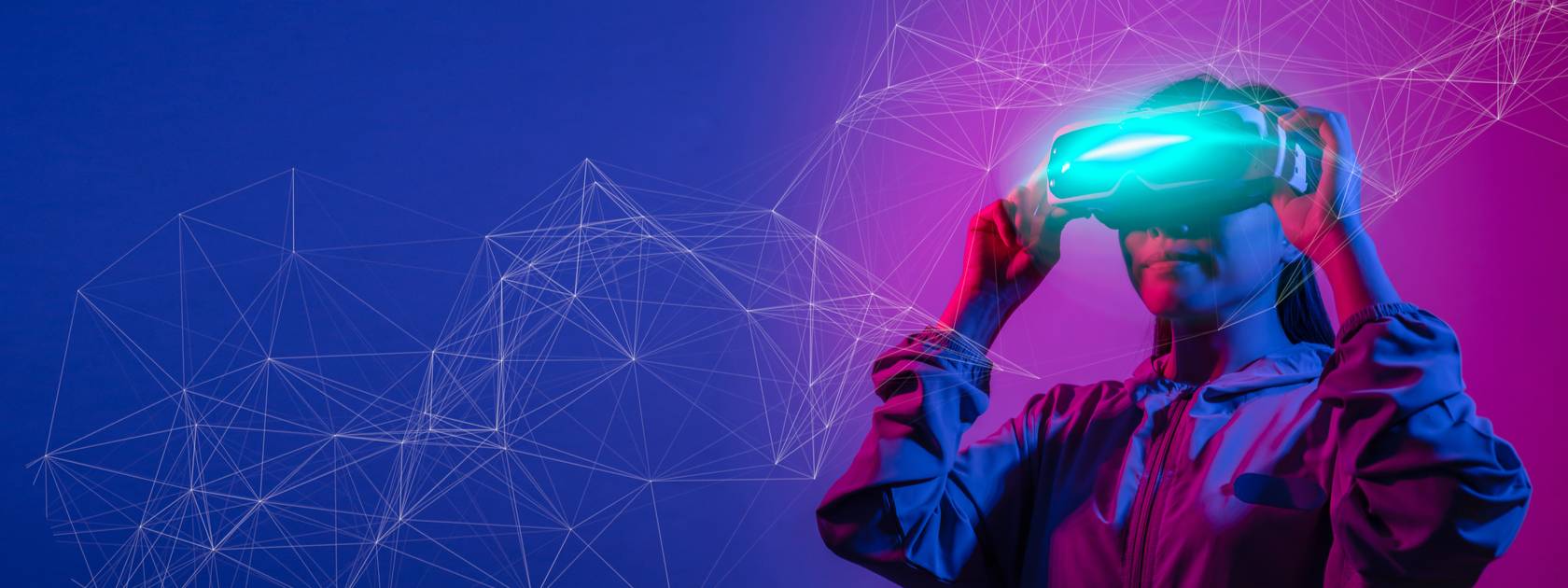
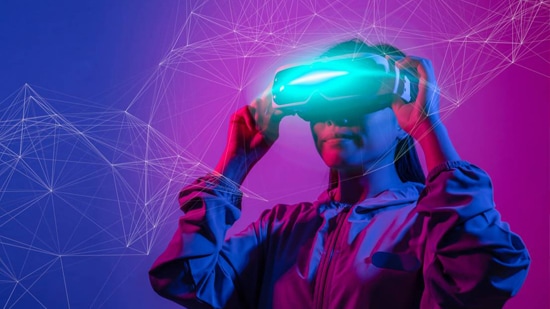 Some basic virtual reality (VR) headsets have been available as early as the 1990s, but it was only after the release of the Oculus Rift in 2012 that VR really burst into the mainstream. Join us as we explore how newer VR technologies could play a role in the future of pilot training.
Some basic virtual reality (VR) headsets have been available as early as the 1990s, but it was only after the release of the Oculus Rift in 2012 that VR really burst into the mainstream. Join us as we explore how newer VR technologies could play a role in the future of pilot training.


